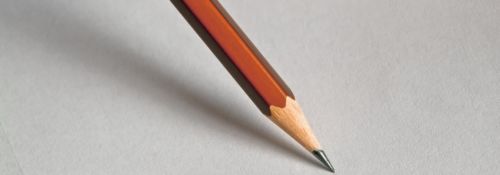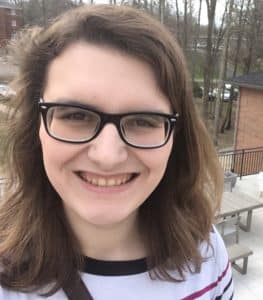
Let It Go: How an Art Elective Taught a Senior to See the World Differently
Written by Sophia Klomparens
I haven’t taken a class in the Fine Arts Building since freshman year, and it shows. I’m unusually nervous as I walk into the first day of class, unfamiliar with the space: wooden horses smudged with charcoal, drawing boards smeared with graphite, and knick knacks lining the shelves, just waiting for some eager freshman to draw them.
But I’m not a freshman. I’m not even an art major. I haven’t drawn anything since I was ten years old. I’m just a senior who decided to take Drawing I on a whim—and after a few weeks of classes, I can confidently say that it was one of the best decisions I’ve made at Hillsdale. Not just because I’m finally learning to draw (although that’s true), or because drawing is a good life skill (also true), but because the lessons I’ve learned in drawing have taught me to see the world differently, in and out of the studio.
Day One: Professor Suarez walks in. Never in a hurry, he moves purposefully but easily, as if he has all the time in the world. “In this class,” he says in his characteristically gentle, soft-spoken tone, “you need to forget about talent. We don’t believe in talent here. We believe in effort. We believe in work. Put in the effort, and I will teach you to draw.”
I’m not sure I believe him. After all, my entire life I’ve been told that artistic talent is just something that happens to you. You have it, or you don’t. Is it possible that I, an English major with no depth perception and terrible eyesight, could learn to draw well?
Professor Suarez explains in the first few classes that drawing well is really about seeing well, and seeing well has nothing to do with eyesight. It has to do with perspective. To draw beautifully and accurately, you have to set aside your preconceived notions of how the world should look, and only draw what your eye really sees. Simple enough—but it’s a lot harder than it sounds.
We start with blind contours, where you carefully draw the outside edges of an object without looking down at your paper. This preposterous exercise trains your brain to focus all of your attention only on the line you’re drawing right now. You have to forget all the drama going on in your friend group. You have to set aside thoughts about how much homework you have to do, or what you’re going to eat for dinner tonight. Right now, you’re focusing on nothing except drawing the line in front of you.
“Stop going so fast,” Professor Suarez tells us. “You have nowhere to go. Nothing to finish.”
Nowhere to go. Nothing to finish. It’s a startling change from most of my college life. Ever since my freshman year, my life has consisted of multitasking: jotting down notes while eating a sandwich, pausing to talk to a friend as I email a professor, and rushing off to class while chugging a cup of coffee. Being a college student means juggling one thing after another. But here in this studio, time slows down until it stops. Nothing exists except the pencil and paper and this shoe that I’m drawing.
Although the work can be frustrating sometimes, Professor Suarez emphasizes the importance of practice as a process. When you practice, you focus on the process of drawing, and it doesn’t matter whether you do well or poorly. Sometimes you get it right. Sometimes you get it wrong. The product doesn’t matter because you get better over time—as long as you let go of the desperate need to achieve a perfect result.
“What happens if you make a mistake?” Professor Suarez asks. “Let’s say I’m drawing this shoe here, and I accidentally make this line too long. That was half a second ago—let it go. What if you keep going and you make this shape too big? It’s over now. It’s in the past. Let it go. Let it go. Make the next thing right.”
This, too, is an unfamiliar perspective. When I make a mistake, my instinct is to dwell on it. I think about it for days. Like a proper perfectionist, I worry about getting everything right, and I let my errors from yesterday negatively impact my performance today. But the drawing process has taught me to forgive my own mistakes as they happen. I’m learning to choose to let the mistakes go.
I’m not an artist, and I probably never will be. But every day, I grow in my ability to see the world as it really is, and that skill is shaping me into a better student, a better friend, and a better servant of God. I still get distracted by the pressures of senior year. I still forget to focus on the beauty around me. But whenever I catch my mind wandering, Professor Suarez’s voice echoes in my ear.
“That was half a second ago,” he says. “Let it go.”
For Further Reading:
Hillsdale Art Majors
Phoebe Kalthoff, Art Major
Professor Knecht’s New Art Exhibit
 Sophia Klomparens, ’21, studies English and Latin. Most days you’ll find her in AJ’s drinking coffee, obsessing over the Aeneid, and listening to unreasonably angsty music. If you ever want to have a passionate discussion about Virgil, let her know—she’s running out of people who will listen.
Sophia Klomparens, ’21, studies English and Latin. Most days you’ll find her in AJ’s drinking coffee, obsessing over the Aeneid, and listening to unreasonably angsty music. If you ever want to have a passionate discussion about Virgil, let her know—she’s running out of people who will listen.
Published in February 2021